Modal Electronics has already made an excellent name for itself on the electronics music scene. The 00-series, consisting of the 8-voice Modal 008 / 008R, 002 / 002R and the mono- / duophonic Modal 001, play in the top league of the synth world. But they are expensive instruments, making the demand on them rather limited.
The popularity of the more recent Argon8 series is expected to be a lot greater. Located at the low-end price range of 649 USD / 550 Euros (Argon8M) to 819 USD / 660 Euros (Argon8X), this new synthesizer family rightly qualifies as a mass market product.
Its low price is not the only argument for an Argon8, of course. Rather, it is the sheerly infinite abundance of its musical and creative possibilities that qualify it as a “sensation”.
The range of Argon8 sounds is on the one hand extraordinary, on the other, its related complexity means you have a lot of tricks and aspects to think of. To simplify this abundance of possibilities, Modal Electronics has implemented / provided various user-friendly options – and this on several levels. Buzzword ModalApp … but more on that later.
Special thanks to Stefan Herr, proud Argon8 owner and an excellent musician as well. His inspiring input and – essential! – Argon8 sound samples have become an integral part of this review.
Getting started requires a little patience …
My very personal Argon8 experience does not get off quite as euphorically. On the contrary – it begins with a little despair. That beautiful instrument lying on the table. The first steps toward sound research. And then an unusual number of error messages such as “All Mod Slots Full”. This almost drives me crazy. Other messages flash and are gone much too quickly, their content is not immediately graspable (… these are positive messages, as it turns out later, intended as confirmation).
An additional handicap: My personally weak short-term memory. Wrong parameters are changed unintentionally, simply because SHIFT hasn’t been deactivated, so that all further programming takes place at the wrong parameter level.
Please note: When pressing SHIFT, you activate additional controller functions. If SHIFT is activated (LED lights up), the user is no longer on the top level, but on the second level of the parameters, whereby the thus activated functions are labeled in BLUE*. In the modulation slot area and arpeggiator / animation / sequencer area, you can even reach a further, “third” level by pressing the ring button located there along with the switches next to them.
[* This type of double-assignment / double-lettering on the panel is reminiscent of the good old Oberheim OB-8 and its Page-2 mode.]
… but it’s worth the effort!
Well, incorrect operation, slight frustration (it’s your own fault!) … is there room for such experiences in a test report? Being that the mere functionality of an instrument can be found in every online quick-review and – even faster – on the manufacturer’s website. Such reports are full of impressive data. But accessing the instrument cannot be deduced from all of this.
It is only by collecting various user notes and testimonials that – together with the technical details and sound samples – you gain an (informative) overall picture of the instrument.
Back to the Argon8. After those initial negative experiences and a little break, the world looks much rosier. My now enlightened approach to the instrument yields a significantly better workflow. Learning by doing. With the realization that Modal Electronics has actually provided an enormously comprehensive Argon8 synthesizer with a cleverly thought-out mode of operation.
Even more, the addition of the (free) controller software ModalApp turns out to be very useful. And thus the large Argon8X – with the iPad / Notebook placed on the right of the controls – makes even more sense. Those minimal additional costs (just over a hundred Euros “plus” compared to the Argon8) provide the user with a full 5-octave keyboard, as well as with space for the additional software controller.
The Argon8 Family
Which brings us to a reflection on the Argon8 family. The tasteful selection of Argon8 models (below) indicates the precise and comprehensive Modal Electronics product placement:
| Instrument | Description | Price (05/2020) |
| Argon8M | The smallest sprout in the family comes in desktop- or rack-format (3U), the rack ears are included | 649 USD / 569 Euros |
| Argon8 | The “middle” instrument offers slim design with a neat 3-octave keyboard | 749 USD / 639 Euros |
| Argon8X | The largest model has been expanded to include the previously mentioned free space (e.g. for a controller) and offers a 5-octave keyboard | 819 USD / 749 Euros |
All instruments offer identical synthesizer architecture. The individual models address the different needs and the available space of the musicians – an excellent solution.
Hardware
This is where we get down to business. When it comes to hardware quality, the new Argon8 family has had to sacrifice a few of the amenities of the Modal 001/002/008 Series (… in view of the price advantages, this is logical). In concrete terms: The pots do not lie “firmly” in the hand, but are slightly shaky. And now, the power supply is external (which fully corresponds to the standards in this price category and is quite acceptable).
On the positive side, the chassis (robust steel and aluminum housing), the keyboard, the joystick and all the switches are of very good quality. And connections are also sufficiently available – the analog Sync-In / Sync-Out interface (Korg / Teenage Engineering Format) is a special feature.
Secondarely, but still of importance, the Argon8 has a lot of visual appeal. The rounded chassis, the classy color, the elegant graphic display – everything about the Argon8 appears balanced and coherent. Which is to say that the price / performance ratio – despite those minimal points of criticism – is superior.
Features
An overview of the most important features:
- 8-voice polyphony
- 4 oscillators per voice
– 32 Wavetable oscillators in total - 120 Wavetables
24 banks with 5 morphable Wavetables each - 28 static Wavetable processors
e.g. De-Rez, Wave-Folder, Wave-Shaper, Phase-Shaper, Rectify - 8 oscillator modifiers
e.g. Phase Mod (FM), Ring Mod, Amp Mod, Hard Syn, Windowed Sync
x - Morphable filter with resonance
2-pol, multimode (LowPass – LowShelve – BandPass/Notch – HighPass) - 3 envelope generators
for AMP, MOD and FILTER
- 2 audio-rate LFOs
one “Poly”, one “Global”, with tempo synchronization
- Mod-Matrix with 8 programmable slots
11 mod sources / 52 destinations - 3 independent stereo-FX-engines
with Delay, Reverb, Flanging, Phasing, Chorus, … - Waveshaping distortion
x - Arpeggiator
programmable, with 32 Steps - Realtime-sequencer
with 512 Steps, 100 sequencer presets - Animations
recordable / editable
x - All time-based features are synchronizable
FX, LFOs, Sequencer/Arpeggiator … all with Int / Ext Sync - Various keyboard-modes
Mono, Poly, Unison 2, Unison 4, Unison 8, Stack 2 and Stack 4
- Glide / portamento
with legato- and staccato-mode - 4-axis joystick
X +/- and Y +/- freely assignable - FATAR TP9/S keyboard (Argon8 / Argon8X)
with Velocity /Aftertouch - 500 editable patches
300 factory presets and 200 user patch storages
x - Audio-Out (Stereo)
- Audio-In
with ability to route incoming audio through the FX - Sustain and expression pedal input
- Analog sync In/Out
(Korg / Teenage Engineering spezification) - MIDI / USB
x - ModalApp for Mac, PC, iOS, Android, VST3 and AU (free download)
Workflow – Assign Modes and the ModalApp
The above feature list makes it clear: The Argon8 is powerful, powerful, powerful! And – as mentioned in our introduction – it may take a little patience to master this instrument: until you are used to handling those Argon8 double assignments and double / triple functions, and until you have mastered the correct operation of its two most important knobs (Page / Param and Preset / Edit / Bank – to the left and right of the display).
Please note: If you turn the left controller (Page / Param) with the right hand, you can’t see the display because your hand is in the way. Same happens when you turn the right controller (Preset / Edit / Banks) with your left hand. It’s not really a big problem, but it’s obvious that handling of the Argon8 programming can be a little tricky.
Once you have internalized the approach and workflow situation, there are increasingly user-friendly aspects that accelerate programming, indeed make it – almost unbelievable! – quite intuitive.
Above all, there’s the brilliant idea behind those “Assign Modes”. Example: If you press LFO 1, the associated LED blinks. The Assign Mode has started, and by turning any knob on the user surface – let’s say filter frequency – the latter function is immediately assigned to LFO 1. What is more: LFO 1-to-VCF Frequ Mod is programmed automatically to one of the unused modulation slots. The same “Assign Mode” procedure applies to LFO 2, VELocity, AFTertouch and many other functions.
The basic assignment of modulation sources and targets can therefore be done in a matter of seconds. If you want to further refine the programming, you will find all the desirable details at the relevant modulation slot.
Furthermore, the display graphics – coming into play when programming waveforms and envelopes – are a welcome help. For example, when switching between the 3 envelopes (AMP, FILTER and MOD), the display immediately shows the shape of the respective ADSR curve you’ve chosen. Even though there’s only one set of ADSR knobs for all envelopes, the graphical display speeds up the workflow and prevents the user from getting lost.
In addition to the “Assign Modes” and the well thought-out graphic display, the free ModalApp offers extra programming help. It not only provides a refined representation of your current programming procedure, but also enables direct access to parameters that otherwise could only be found via a few detours. Thus, an iPad (or equivalent) with the ModalApp turns out to be the ideal companion to the Argon8 / Argon8M / Argon8X.
What ModalApp can do:
- All parameters accessible from a single interface
- Preset Manager page for preset management, backup and import
- Modulation page to quickly view and edit the current patch modulation settings
- FX page for selecting and editing the 3 stereo FX engines on Argon8
- Sequence page for live sequence controls and editing the 4 parameter animation rows
- Keyboard page for playing Argon8 directly from your device as well as access to other keyboard settings
- Settings page to configure MIDI settings and update the firmware
Source: www.modalelectronics.com/modalapp
By the way: ModalApp is a Software Editor for various Modal Electronics synthesizers, such as SCULPT, CRAFT or – bingo! – Argon8.
Sound potential
As you would expect, the Argon8’s tonal range (the tonal range of this WAVETABLE synthesizer, to be more precise) is remarkable. Lead sounds / pad sounds / sound effects and sequencer animations are the strengths of the instrument.
On the other hand, the Argon8 would hardly be on the wishlist of musicians looking for a pure bass / electro / techno synthesizer. This is understandable, considering the Argon8 concept. For some, the filter may also lack the necessary brutalo dynamics.
Special goodies of the Argon8 sound potential are tucked away in the keyboard modes. Whether MONO, POLY or UNISON: The tonal results are in each case radically different and – each mode in its own way – expressive.
The POLY mode, in which the sounds are alternately output on the right and left channel, is particularly beautiful, reminiscence of the glorious PPG Wave 2.2 / Wave 2.3 Synthesizer from Wolfgang Palm.
The filter, a low pass filter in the sense of the SKULPTsynth and CRAFTsynth2.0, has a frequency response from 0 Hz to 22 kHz and is capable of MORPHING. Specifically, the filter can be morphed from low pass, through band pass, to high pass.
However, the distinctive filter resonance is possibly more relevant to sound design than morphing capability. And this may not be everyone’s preference, as feedback effects occuring at high resonance values can make the sounds difficult to control.
But there is a valuable musical opportunity inherent in this fact – “moments of surprise” rarely to be found in the musical portfolio of modern synthesizers. Moments of surprise that force the user into immediate action (or not) to bring that runaway sound back into the corral.
The Oscillator Modifiers and Wavetable Modifiers – available in dozens – open up vistas of pad sounds and effect sounds. Phase Mod (FM), Ring Mod, Amp Mod, Hard Sync on the one hand, Derez, Crush, Resample and much more on the other – extensive options that offer an enormous range of musical output (provided you have the talent and sufficient programming time).
We don’t want to leave two minimal criticisms / comments about the sound design of the Argon8 unmentioned. First: The envelope times are relatively short. In effect, not more than a few seconds. Exceptionally long attack and release times are not part of the instrument’s portfolio.
The second point applies to the overall volume of the sounds. The basic sound level of the Argon8 remains – despite the volume controller being adjusted to the maximum – reticent and modest.
Now, there are several ways to increase the basic volume:
- Turn up the distortion control, increasing the volume (but also the distortion)
- Press PAGE + turn the volume control, increasing the PATCH GAIN up to 95 (dB)
- Change the keyboard mode to UNISON
- Switch off the FX department -> FX Level “0”
In particular, deactivating the effects creates enormous headroom. “Volume” can now be reduced and there is scope to bestow certain sounds with the right volume / level and, above all, with the necessary presence. (Thanks to Stefan Herr for this information!)
On the other hand, the 3 FX sections of the Argon8 are extremely rich in sound, in many cases contributing to its unique sound character. It is therefore important to consider from patch to patch whether the quasi deactivation of the effects section (to increase the volume) is an advantage or not.
All In All
The overall concept of the Argon8 is absolutely remarkable. Hats off to the development team, who went out of their way to give the sound engineer and synthesizer enthusiast the best possible access to so many details of extensive sound architecture. All the more remarkable, since the price / performance ratio is not just “good”, but sensational. An 8-voice Wavetable synthesizer with all those refinements of sound manipulation, operation and performance for a few hundred Euros … it sounds like April Fool. But it is not.
Before acquiring an Argon8, the prospective buyer is advised to carefully check the user interface of the instrument to determine whether his personal approach / programming method matches the given workflow.
Assuming the workflow matches your needs, and also assuming a gap in your studio in respect to wavetable synthesis, the Modal Argon8 is urgently recommended.
We’d like to round up this report with a proper compliment:
“The Argon8’s new sound engine enables an extremely complex synthesis that has never been found in this price range (and beyond). The development of Argon8 is a testament to the commitment and the culmination of the almost six years of hard work by the young development team from Bristol – England.”
x
Thanks to Musikhaus Hieber Lindberg (Munich) for supplying us with the Argon8 for this review.
x
35 minutes of audio material have been added. All sounds originate from the Argon8 synthesizer. Sound files marked with * are (c) by Stefan Herr.
Argon8M / Argon8 / Argon8X
Wavetable Synthesizer with 8 voices,
arpeggiator and sequencer
Prices:
(09/2023)
Argon8M (desktop / 3U rack version)
Width: 38,4cm/15 inches, depth: 12,7cm/5 inches, height: 8cm/3 inches
Price: approx. 769 USD / 544 Euros
Argon8 (3-octave keyboard)
Width: 55,5cm/35 inches, depth: 30cm/11,75 inches, height: 10cm/4 inches
Price: approx. 869 USD / 599 Euros
Argon8X (5-octave keyboard)
Width: 88,5cm/35 inches, depth: 30cm/11,75 inches, height: 10cm/4 inches
Price: approx. 969 USD / 649 Euros
Links:
Modal Electronics Website
Open / Download:
Modal Electronics Argon8 (3800 x 2600 px)
Other Wavetable Synthesizers / Comparison:
PPG Wave 2.2 / Wave 2.3 – the one and only (Test Report)
Waldorf QUANTUM – a hybrid path to the future (Test Report)
Studiologic Sledge 2.0 / BLACK – a panther to be tamed (Test Report)
Novation SUMMIT – an OSCar synthesizer with 16 voices? (Test Report)
Youtube:
Comments / additional notes from Stefan Herr:
The Argon8 is my first hardware* Wavetable synthesizer. I missed the Wavetable PPGs in the 80s (too young and therefore no money) and I somehow didn’t warm up to the Waldorf Microwaves in the 90s and 2000s. Nevertheless, I couldn’t get the Wavetable sound of many music productions (e.g. Saga or Trevor Horn) out of my head, so that I avowed it for myself at some point.
[* Although a digital synthesizer is actually always implemented in software nowadays (whether on the CPU of a DAW or on the DSP in a “hardware synth”), the feel of real hardware makes the difference! ]
When I saw the first Argon8 demos (Youtube) and realized its very extensive features, I decided to buy one immediately. My plan was to be able to produce expressive, concise sounds with all those helpful performance features – dynamic Fatar keyboard with aftertouch, joystick, modular effect section, sequencer, arpeggiator, possibility to change all parameters in real time, etc. To make it short, the Argon8 more than exceeded my expectations.
When recording the sounds for this report, it often happened that I simply lost myself in a particular sound, and, going on one of the presets, tried to find out how far that particular acoustical journey would take me. From nuances (slight change of the waves with the Wave 1/2 control, delicate filter sweeps with a joystick or aftertouch) to dramatically modulated overtone spectra to chaotic distortion – the possibilities were (and indeed are) unlimited.
An additional aspect is that noble Argon8 effects section, which can be integrated interactively into any sound tweaking. It can be seen from two “features for connoisseurs”, how passionate the developers of Modal Electronics were when it came to the effects section. My personal favorite effects: “Dotted 8” delay and the “Ping-Pong” delay with its adjustable modulation depth. 6 parameters can be changed and modulated for almost all effect types.
Had I known beforehand how good the Fatar keyboard is, I might have bought the bigger Argon8X. On the other hand, the smaller Argon8 fits perfectly on the desk for spontaneous sessions with other small-sized sound generators such as the Korg minilogue XD or the Moog Sirin. And the feel is good – the Argon8 feels valuable and pleasant under the hands. Little details such as the aluminum joystick button also contribute to this.
As can be read in the report, due to the complexity of the Argon8 it takes time to get used to its operation. After getting acquainted with the synthesizer however, most of the functions make immediate sense and the instrument can be easily well-mastered. It’s sort of Yin and Yang: longer training period as a given, satisfyingly complex sounds as a reward.
It helps me a lot if I run the ModalApp on the notebook parallel to operating the Argon8 device: Programs can then be selected at lightning speed and you have an overall view of the sound parameters. And actually, the sequencer can only be used properly with the ModalApp, in my opinion.
What I struggled with initially was the challenge of mastering the various sound levels (described in the report). Considering the complex signal path of the Argon8, it isn’t surprising that the satisfactory adjustment of these levels has its pitfalls. This is especially true when the internal effects section is involved. For this reason, it would be good if the “Patch Gain” function were printed on the control panel (which is not!). At the moment, the key combination required can only be found by studying the operating instructions exactly. But that is complaining at a high comfort level. A little patience brings more than ample rewards. If you have quality external effect units in your studio (e.g. Strymon Big Sky or GFI Specular Tempus), simply switch off the Argon8 effects section if you need a greater volume.
All in all: Argon8 is an unusually high-quality instrument at an unusually fair price. What more could you want?


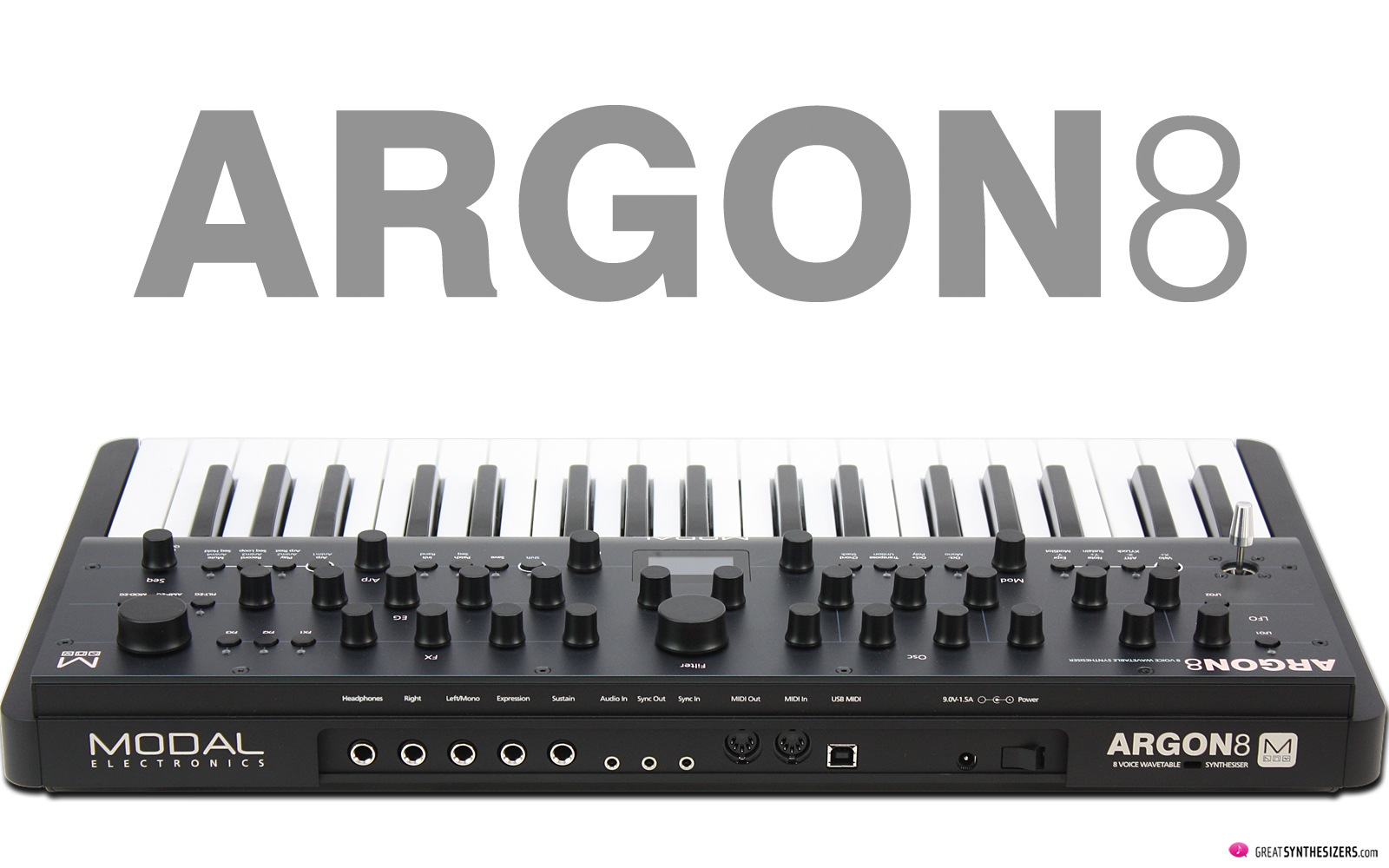


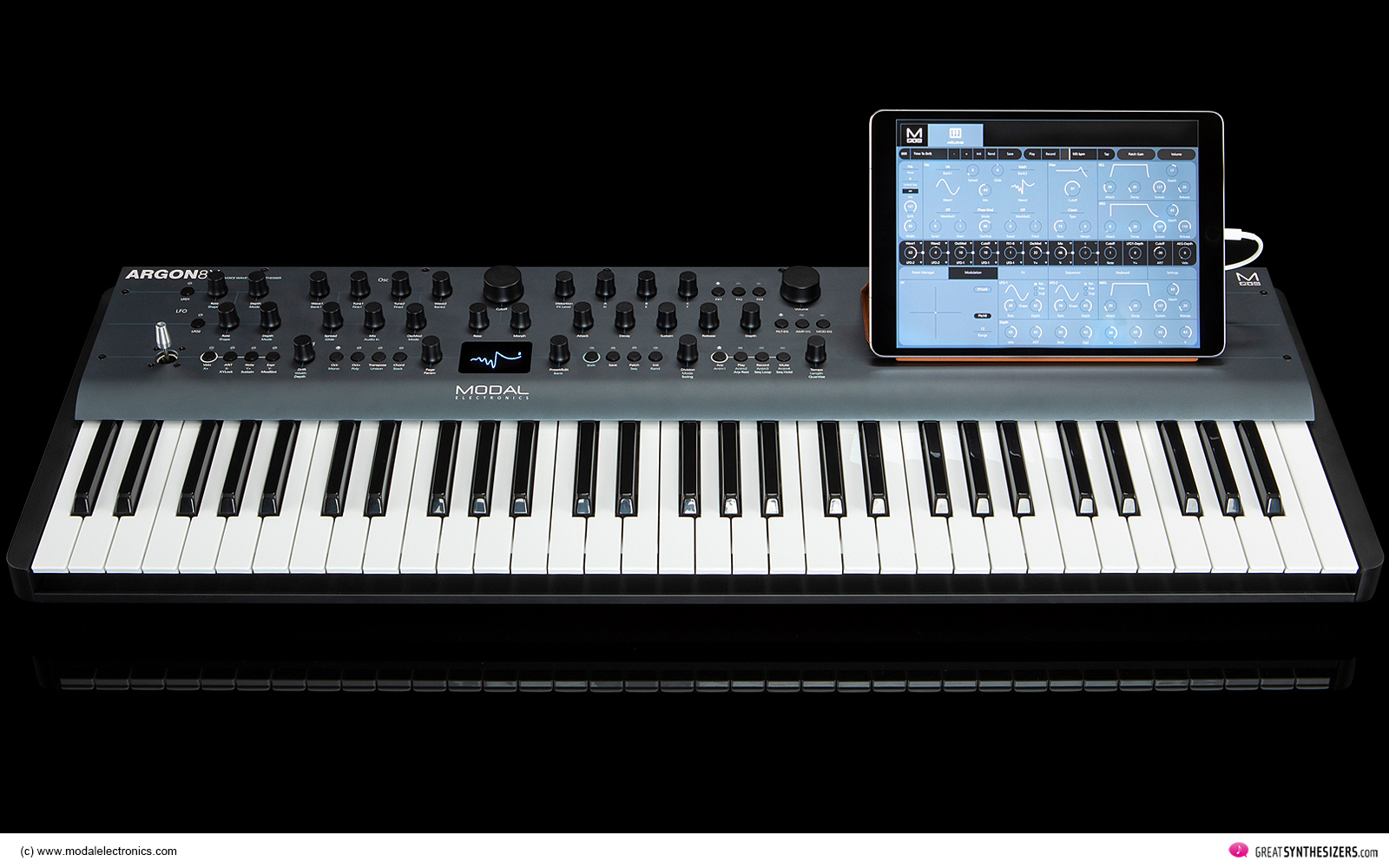
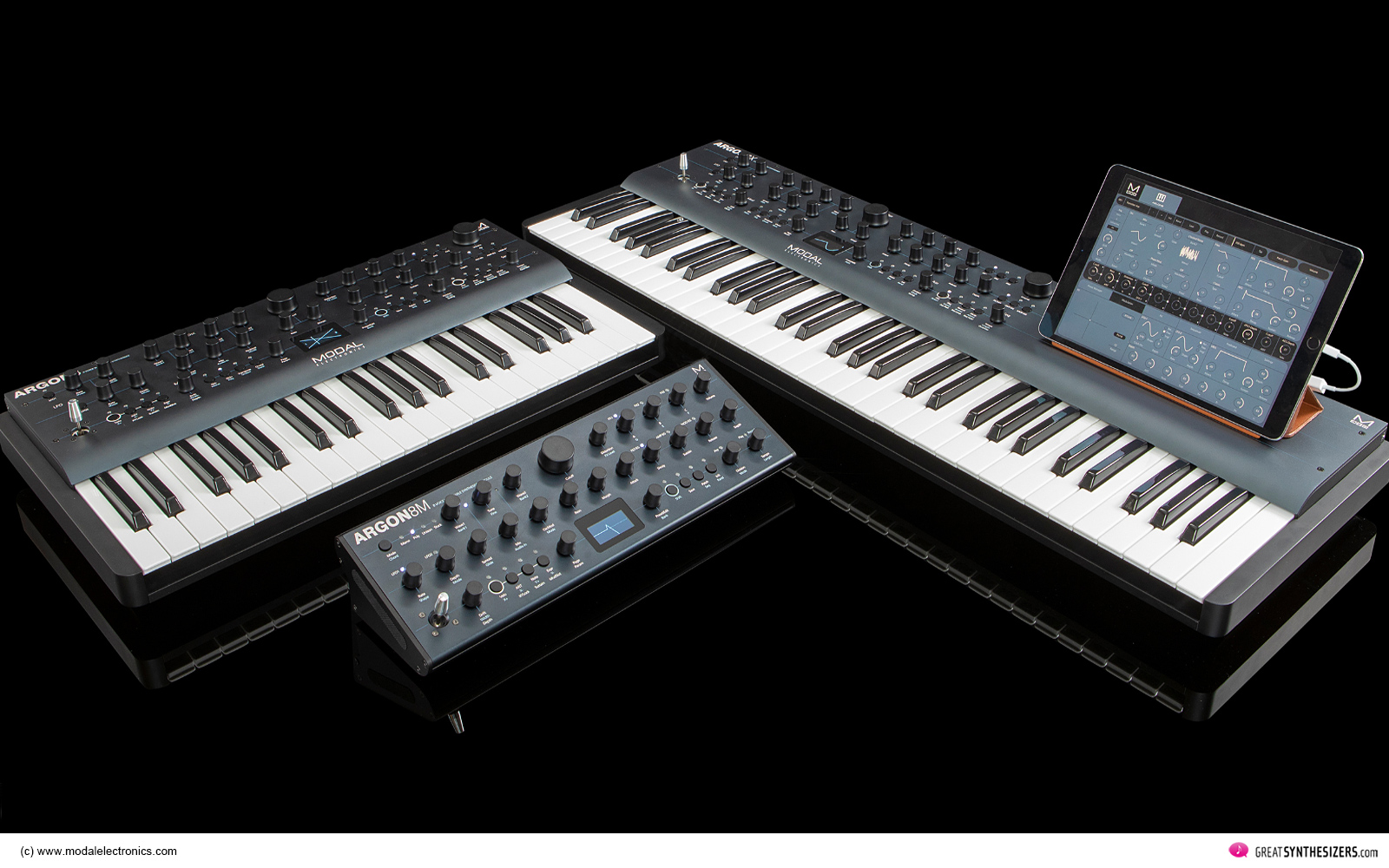

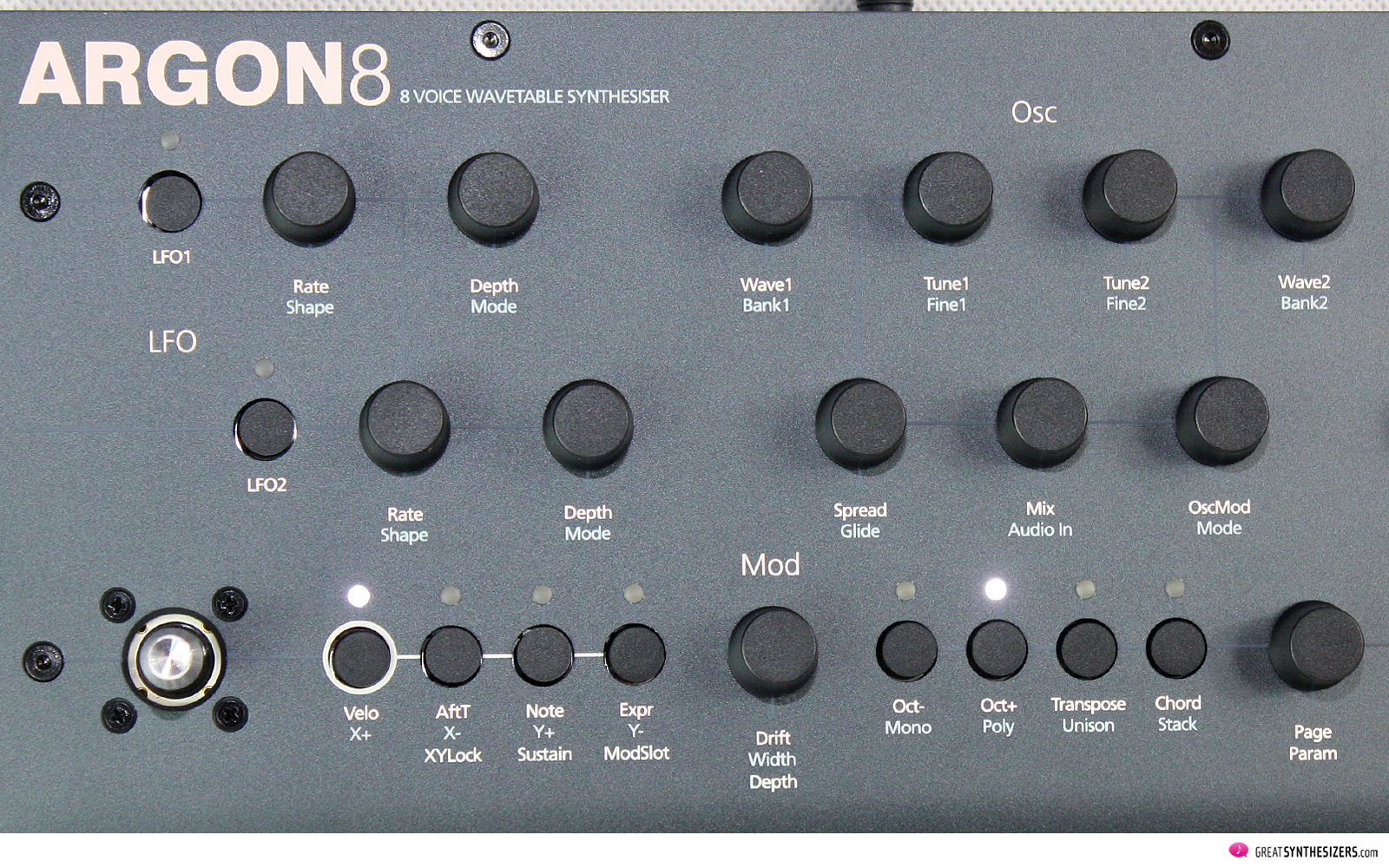

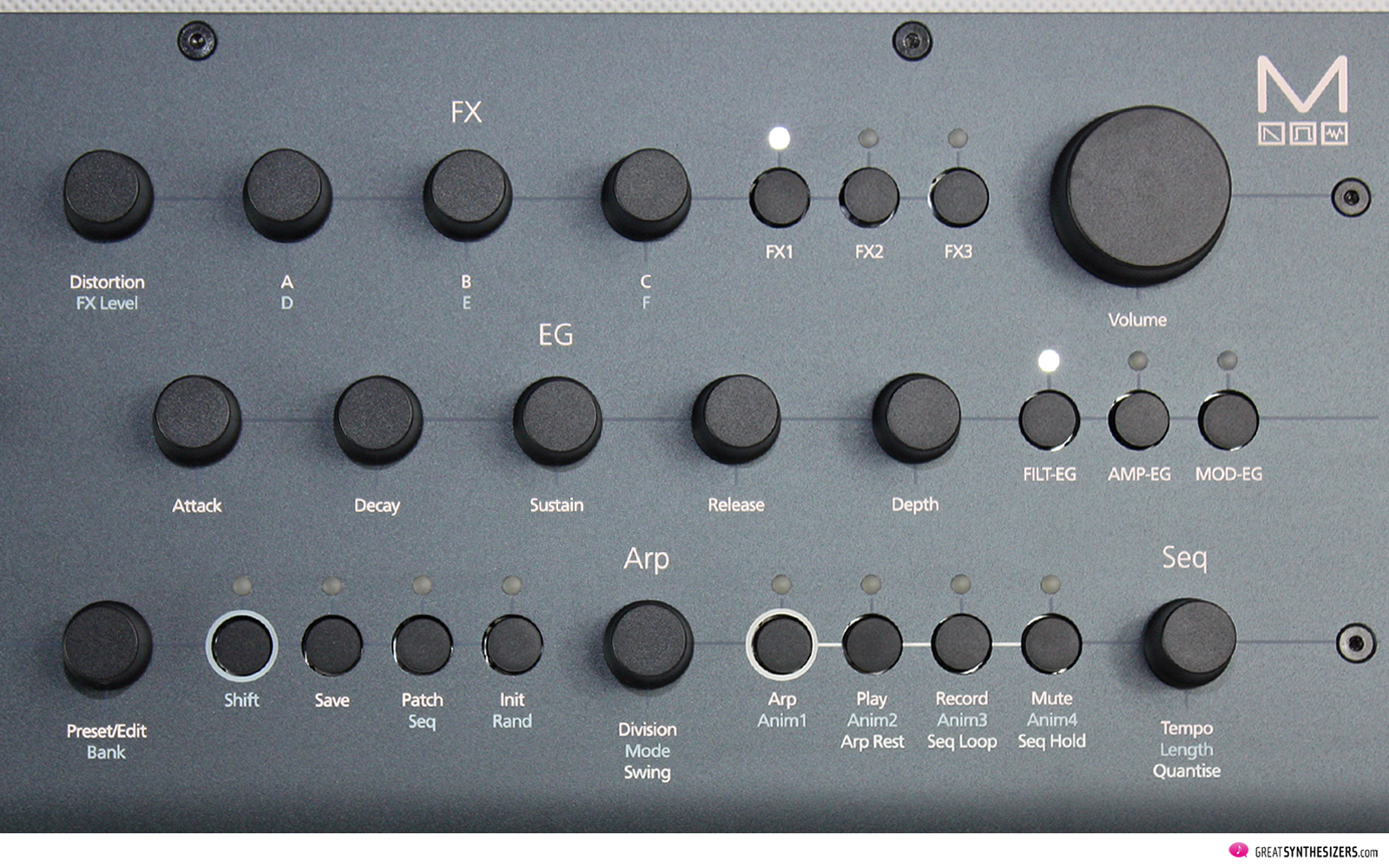
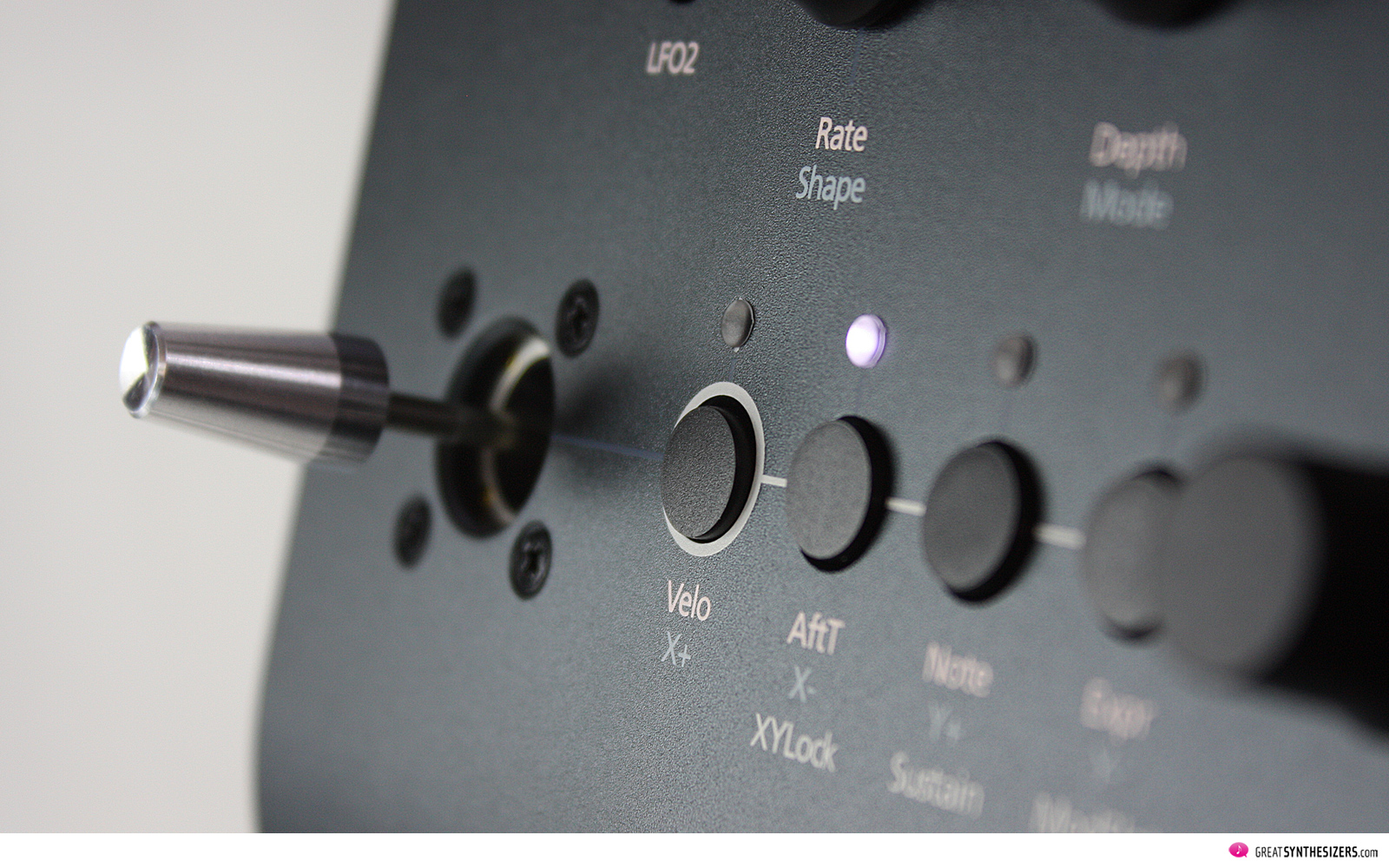
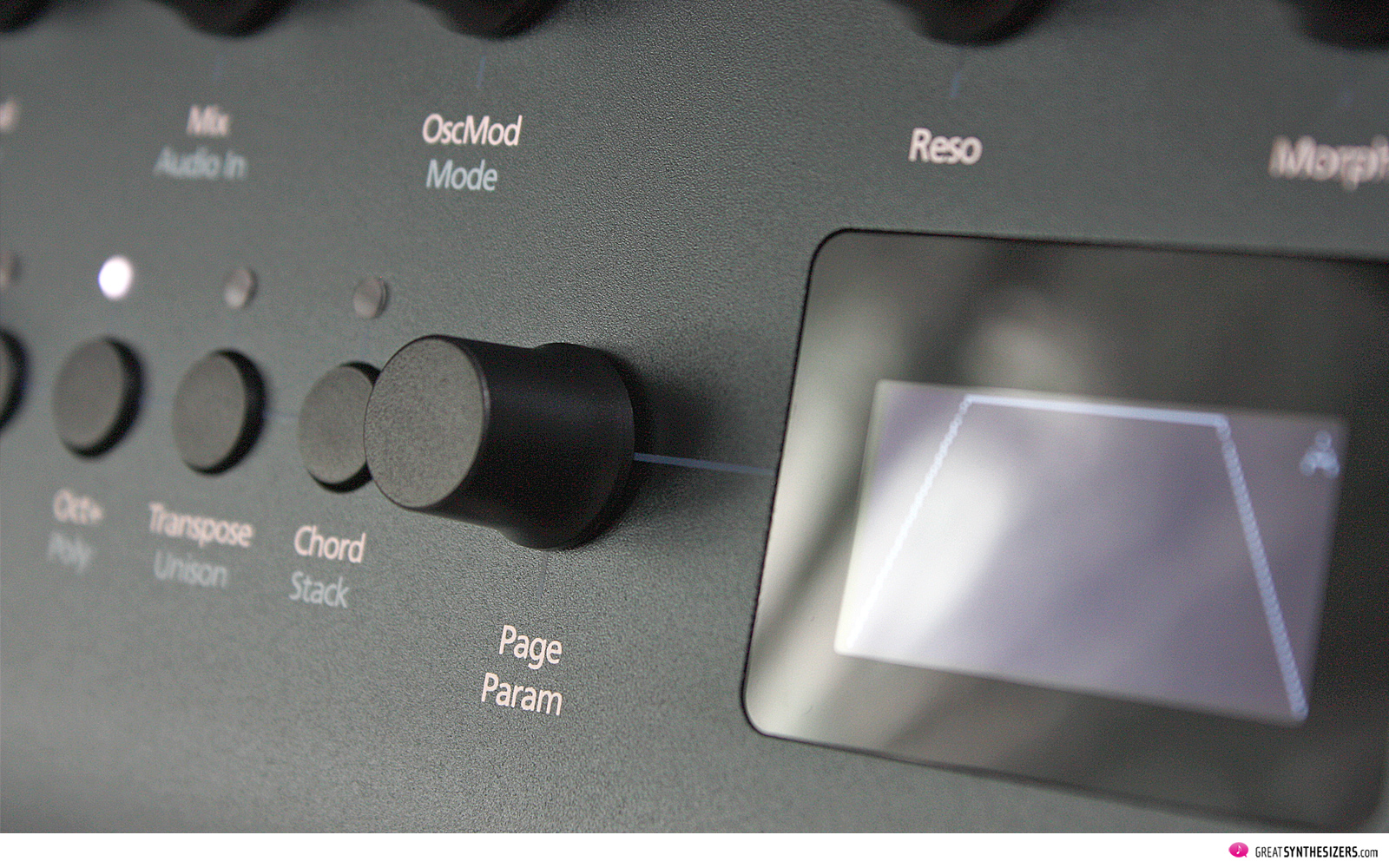
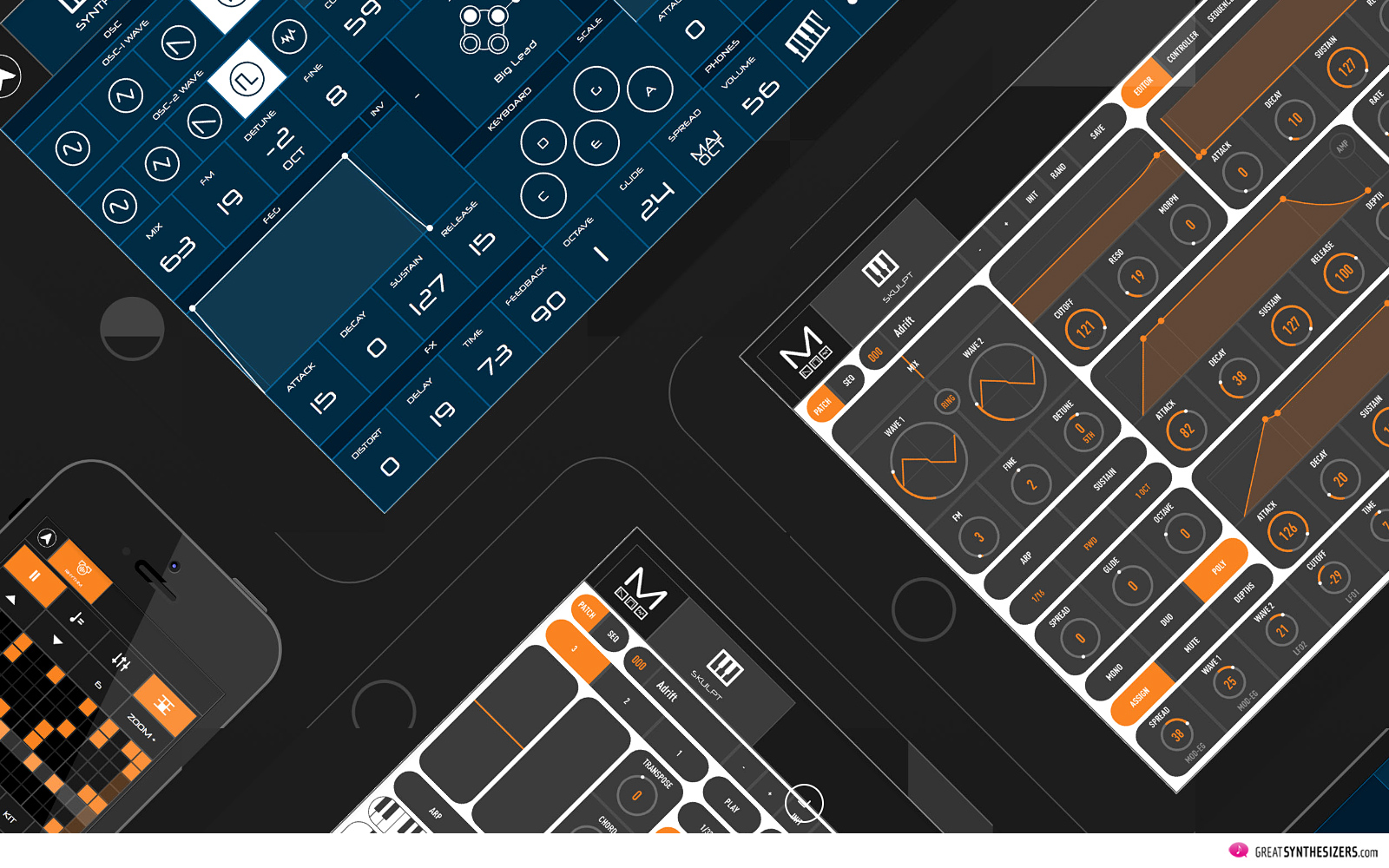
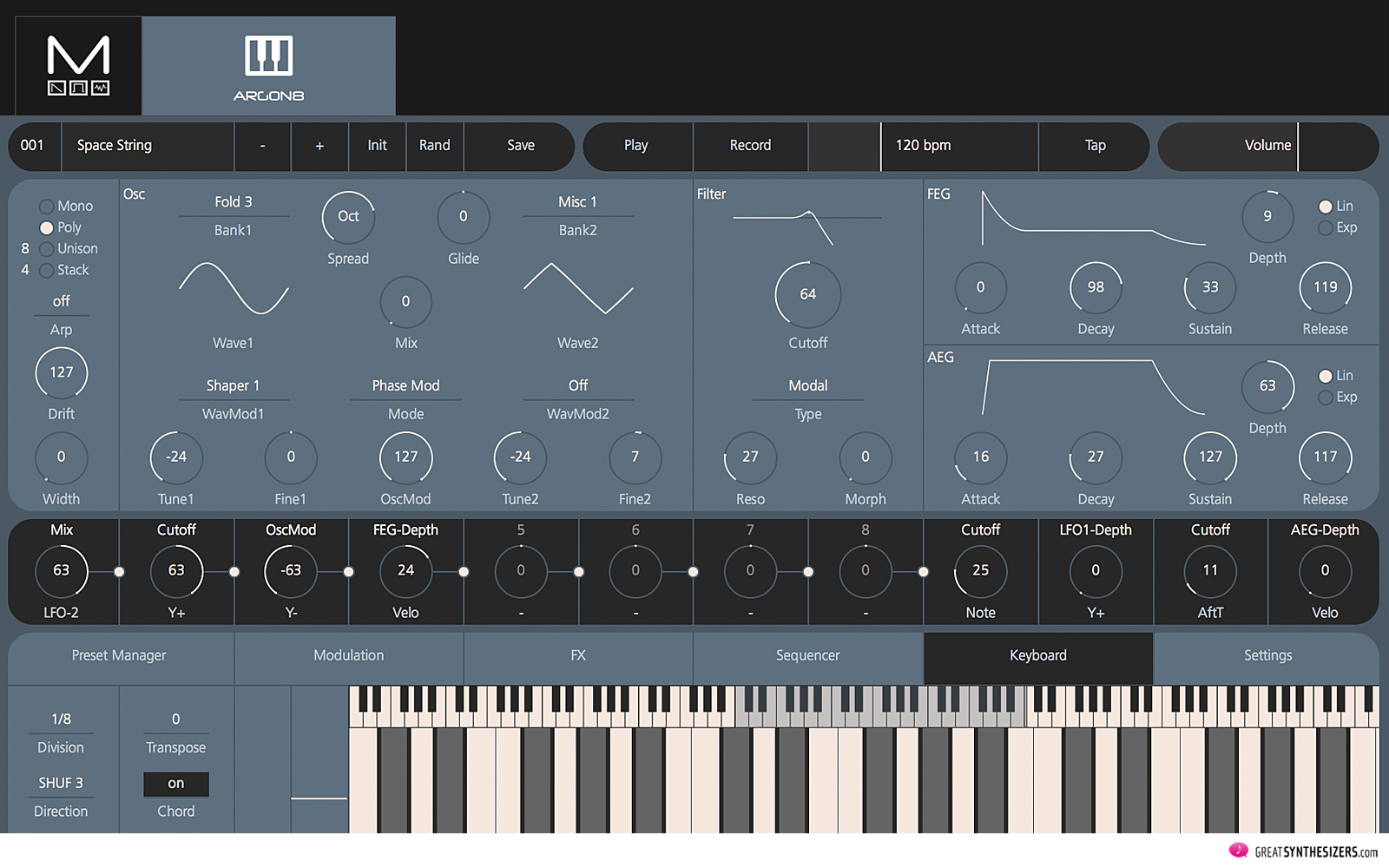
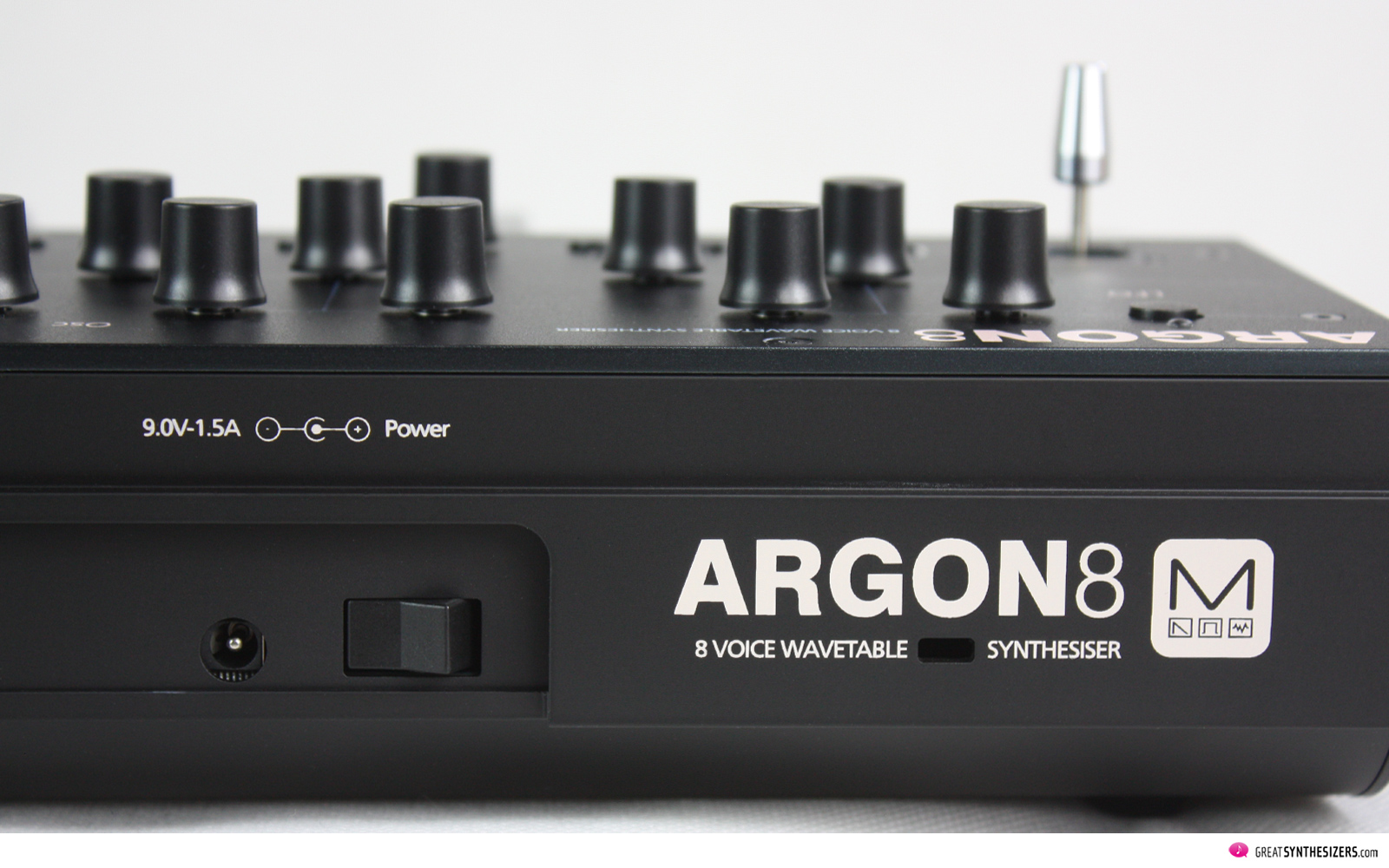
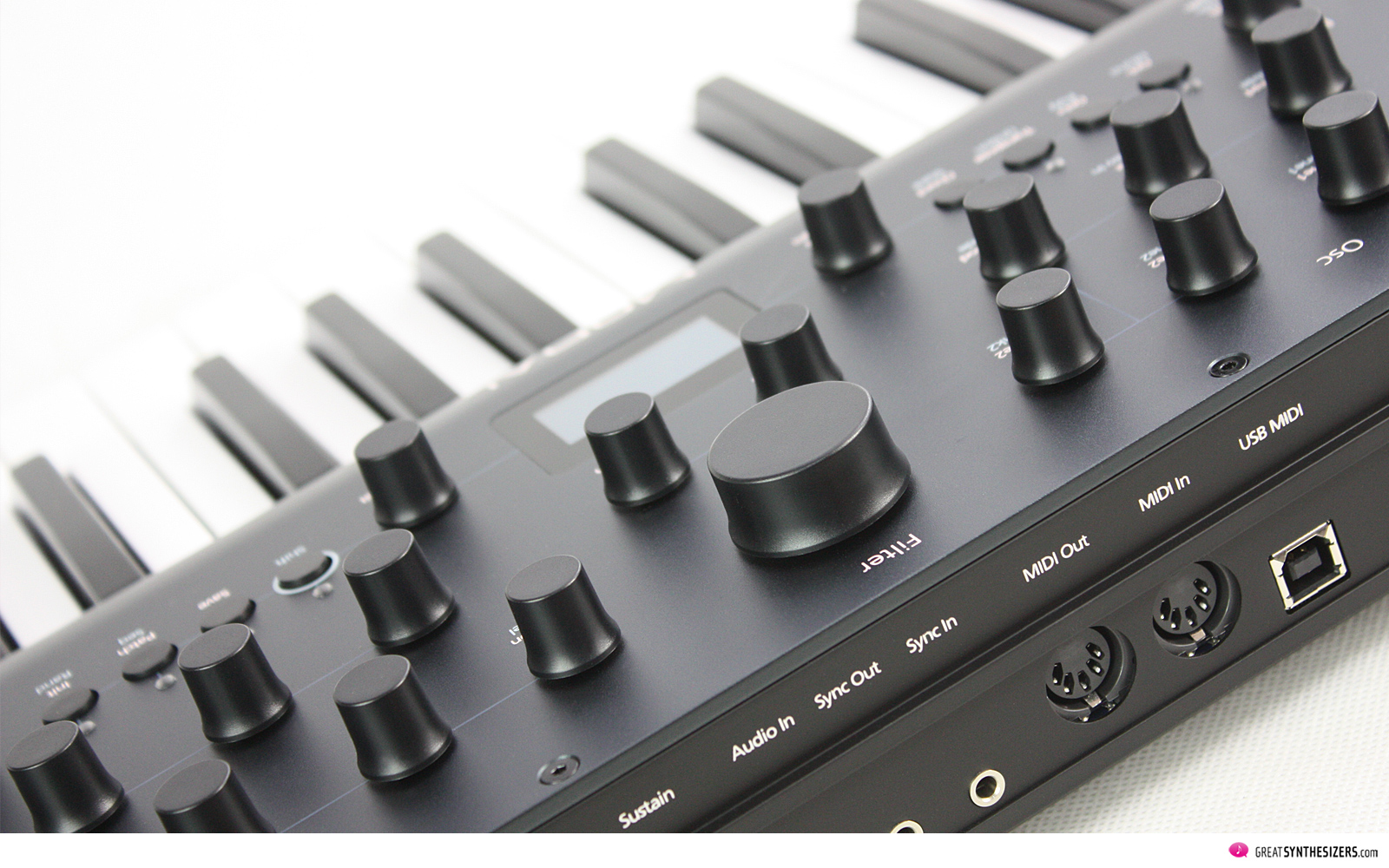
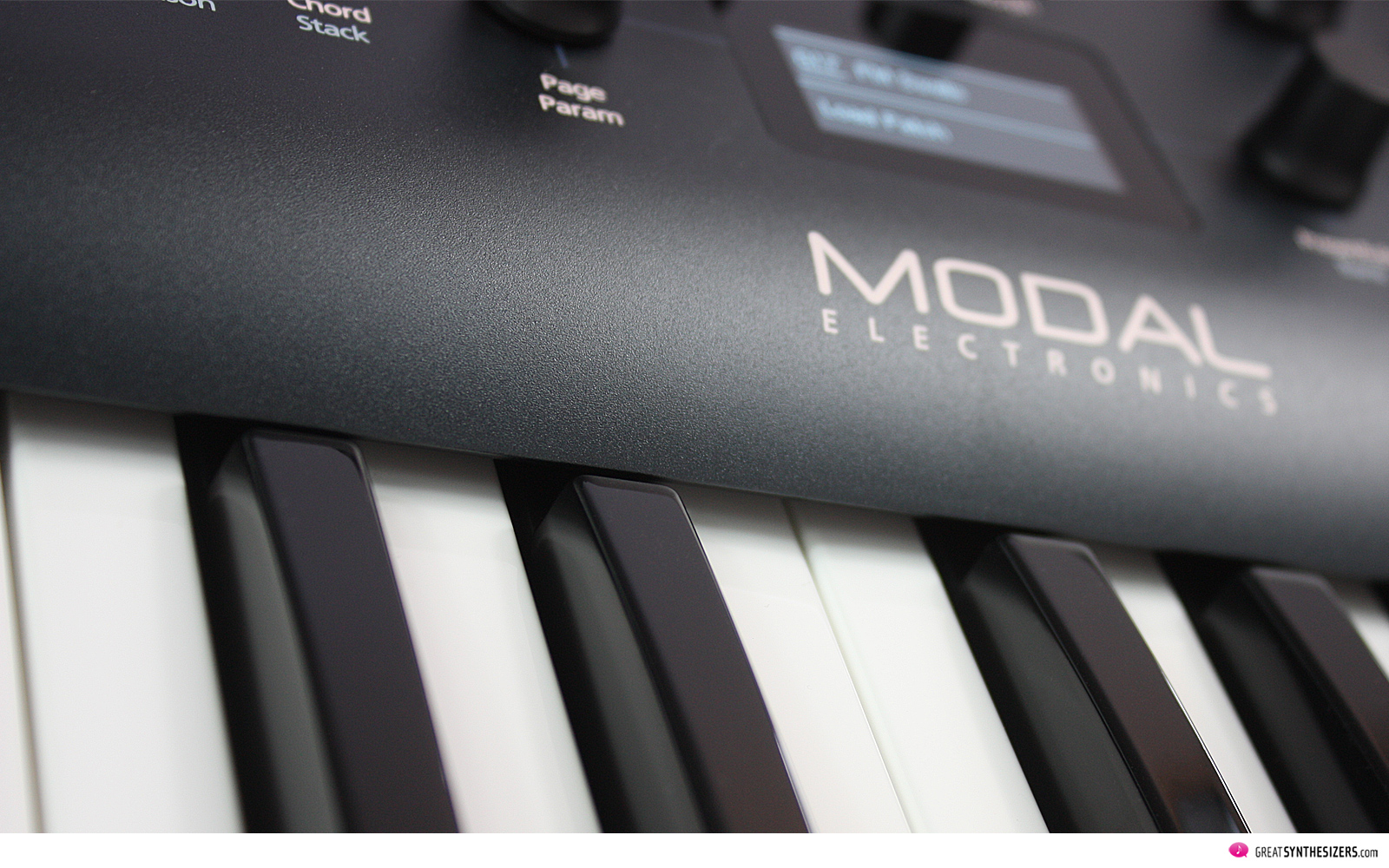
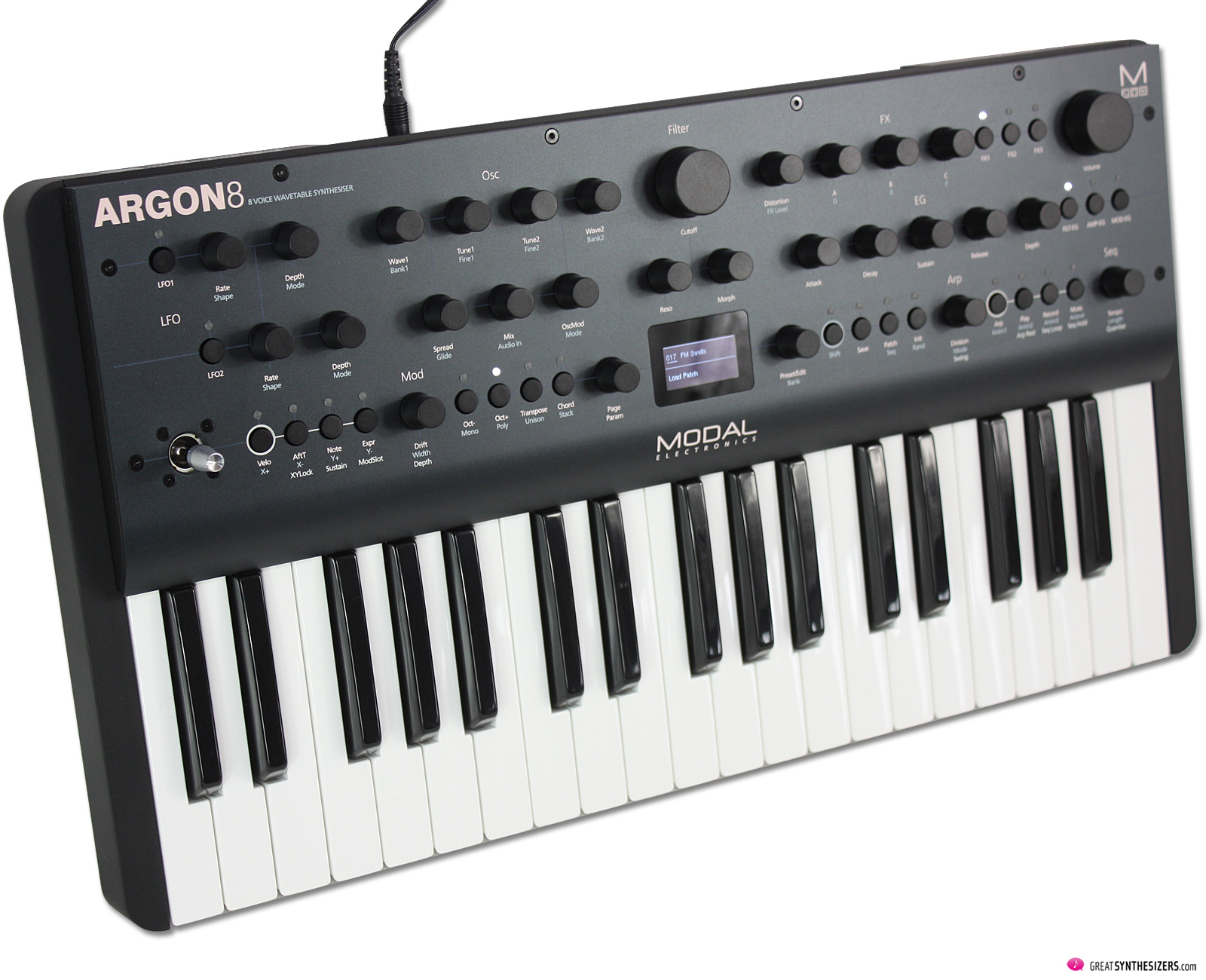
You forgot about the different selectable envelope types, individually for each of the three envelopes… Very powerful!